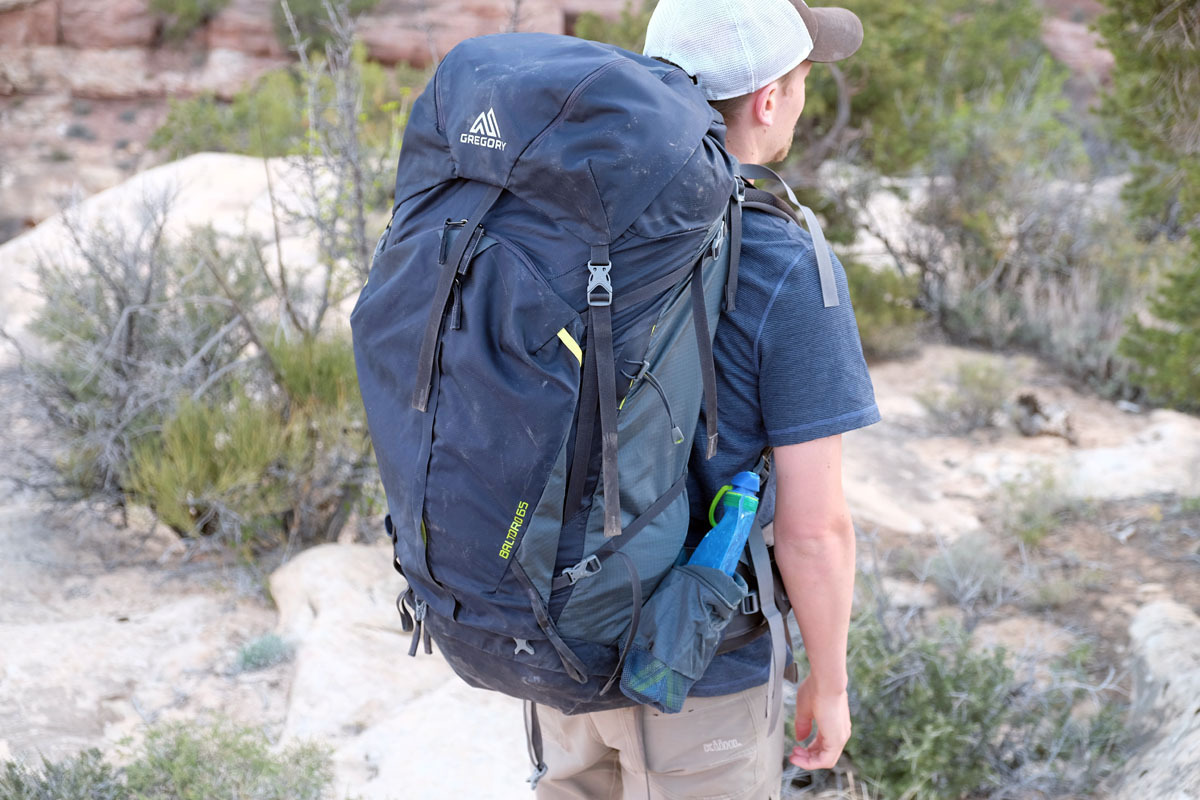
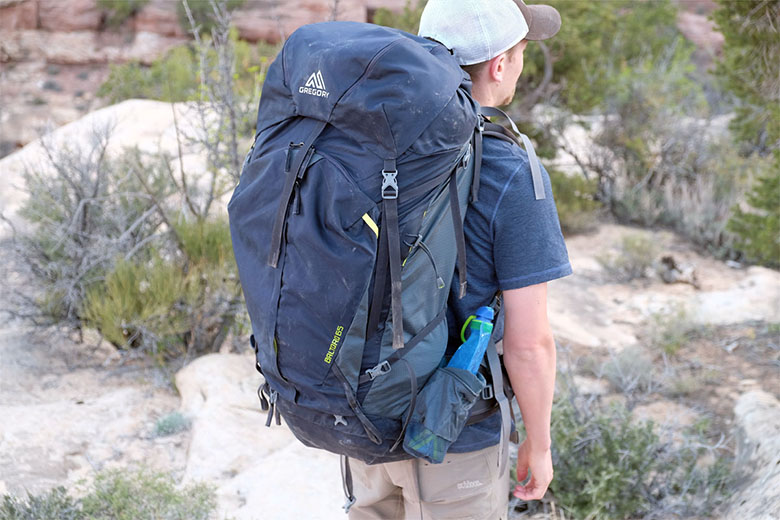
Switchback Travel


Switchback Travel
The previous generation Gregory Baltoro pack was a legend on the trail for its heavy hauling expertise. Comfort seekers loved the suspension and great padding that carried weight better than its more compromised, lightweight competition. The updated model has cut ounces away from that original design, but retains the excellent carrying comfort and quality build. Below we break down our test of the Baltoro, including the pack’s construction, durability, organization, and more. To see how the Baltoro stacks up, check out our comparison table and article on the best backpacking packs.
After putting on some serious miles with the Gregory Baltoro 65 in Utah’s Canyon Country, we can attest to its high level of comfort. Gregory may have reduced the thickness of the padding in the hipbelt and shoulder straps, but they clearly stuck to what made the Baltoro so popular from the start: supportive cushioning and supreme carrying comfort. Much of this can be attributed to what they didn’t change—the suspension system itself, which was mostly untouched. The pack feels sturdy and moves with you really well, something we particularly appreciated on longer climbs when we could feel the hipbelt pivoting with each step.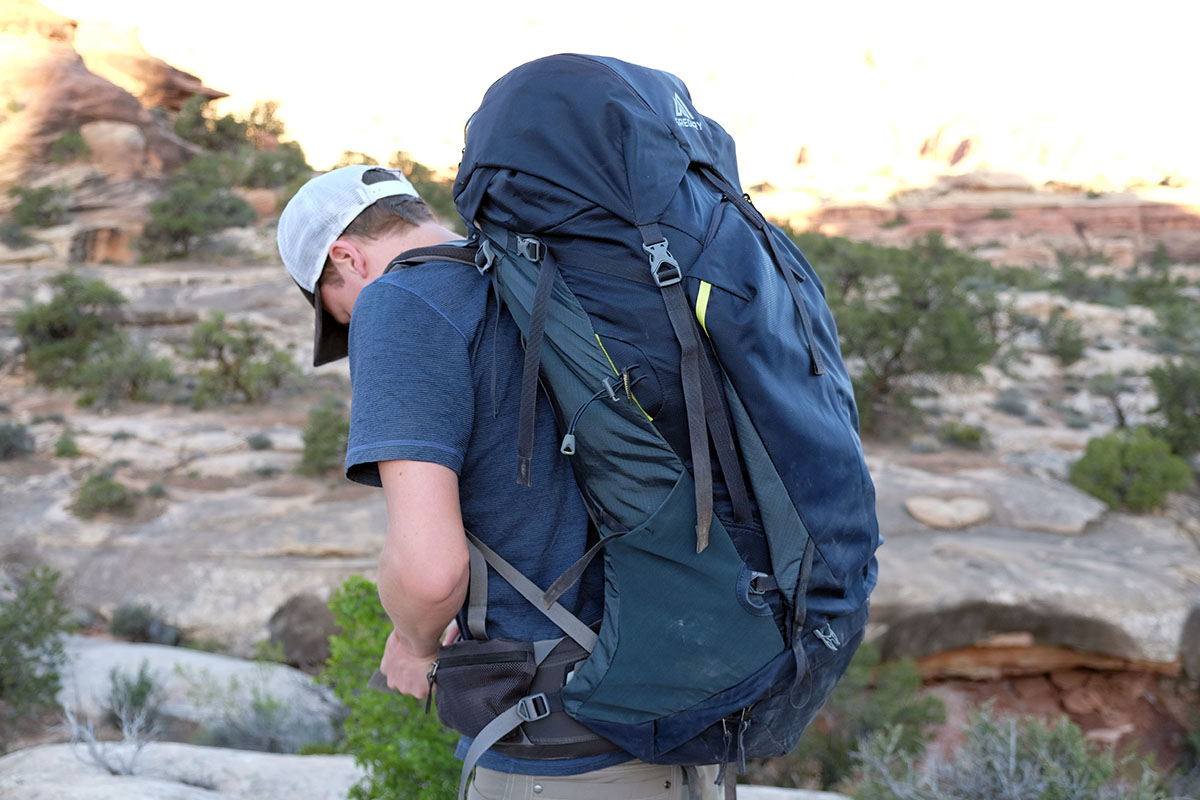
We were hiking with extra gear for testing and the limited access to water meant we had to carry a lot on our backs, so the Baltoro was loaded down with 50-plus pounds on one multi-day trek. Compared with the Osprey Atmos AG we also had along, the Baltoro handled the weight far better. What sets the Baltoro apart is its cushioning: the premium foam is firm but molds to you, which allows you to cinch down the pack snugly to keep the weight on your hips.
In addition to a little less padding, Gregory also uses marginally thinner fabrics than the previous generation Baltoro. The net result is a 9 ounce drop in empty weight, and from our experiences, zero drop in durability. We didn’t treat the pack with much care, setting it down roughly on rocks and dirt and scrambling around boulders in Canyonlands and Cedar Mesa, and the pack has shown very few signs of wear. The body of the pack uses a mixture of 210 and 300-denier nylon—on par in terms of tear resistance with packs like the Osprey Aether AG and REI Traverse—and the bottom of the pack uses a more substantial 630-denier fabric. In all, the Baltoro has held up to our abuse just fine. 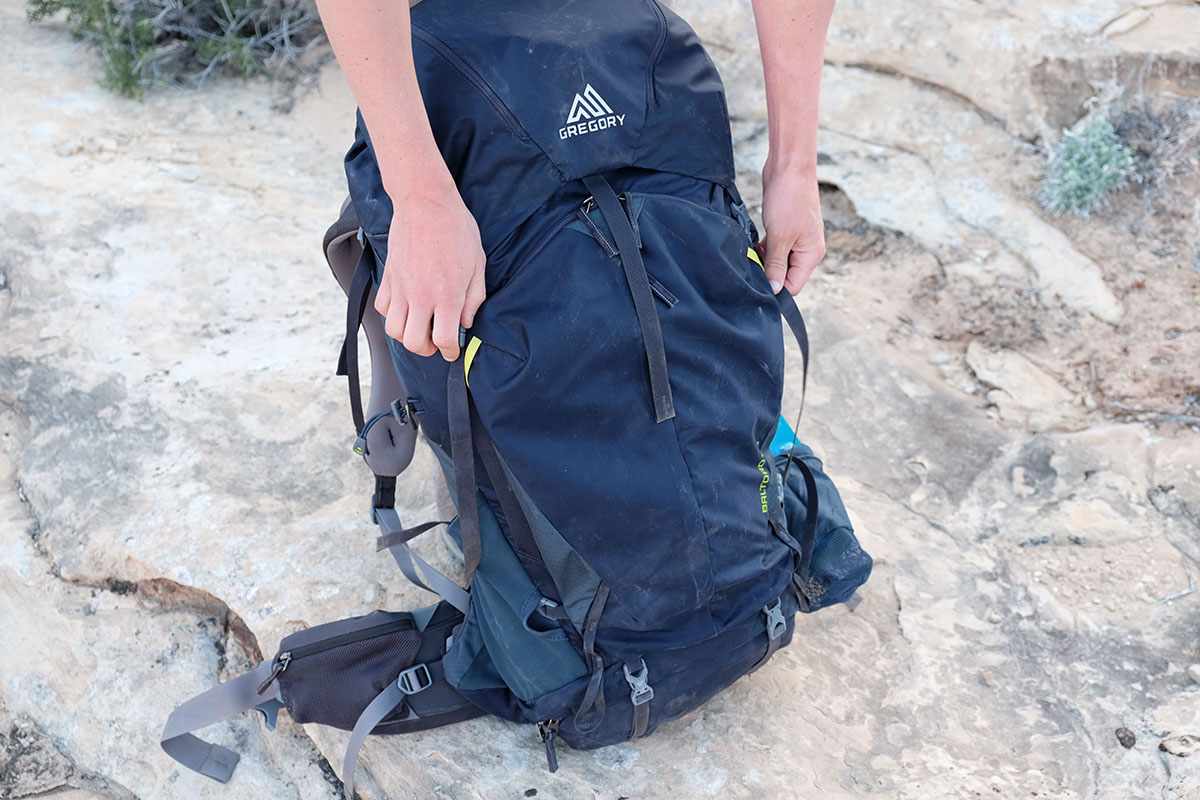
Organization is another strong suit with the Baltoro. There are a total of 8 exterior pockets, including a large zippered pocket along the front of the pack that is perfect for items you need quick access to like water filtration. More, the zippered u-shaped access at the front to the main compartment is a welcome feature when you inevitably need to grab something in the middle or bottom of your pack. We did find the zippered pockets along the top lid a bit annoying because the zipper pulls were just long enough to swing and reach the back of our heads, but the storage from the overlapping top pockets was a great feature. You also get a hipbelt pocket, complete with a water-resistant zipper and coating. Unfortunately, the pocket is a bit small, so larger cell phones or point-and-shoot cameras might not fit.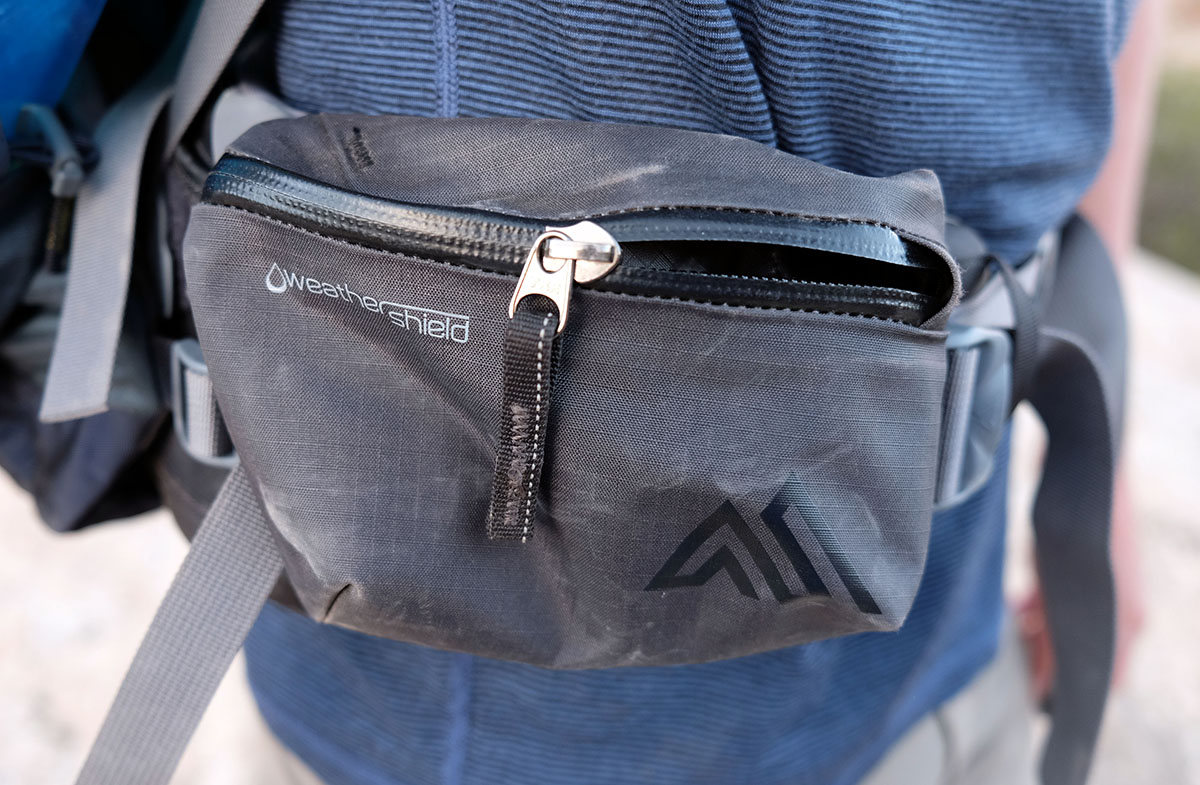
To round out the updates of the new Baltoro, we like the included rain cover, which easily stores in its own pocket, but are less sure about the dual use hydration sleeve / summit pack. It's a nice idea in theory, but the summit pack is compromised with only thin shoulder straps and limited comfort. In good news, the main pack’s compression straps can be removed and attached to the daypack as a hipbelt. Nevertheless, if we need a summit pack, we still prefer to bring along the very packable and functional REI Flash 18 in lieu of the Baltoro’s reservoir sleeve.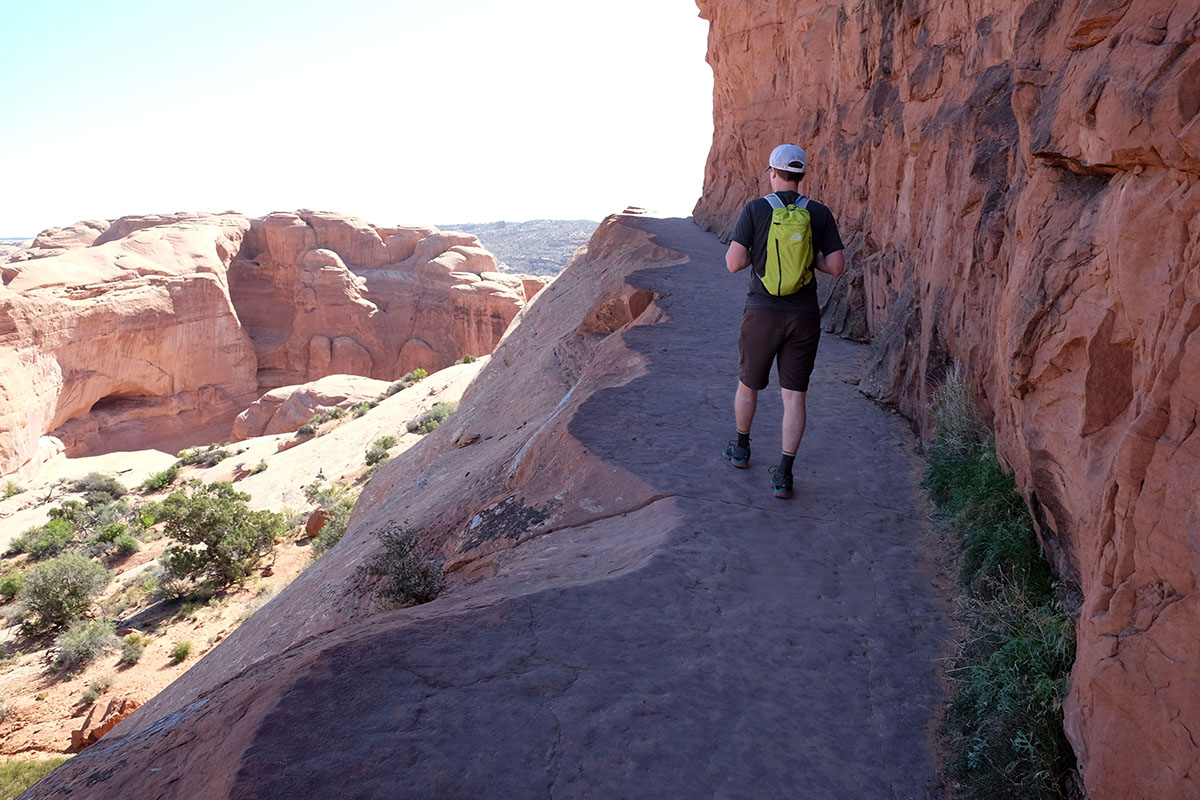
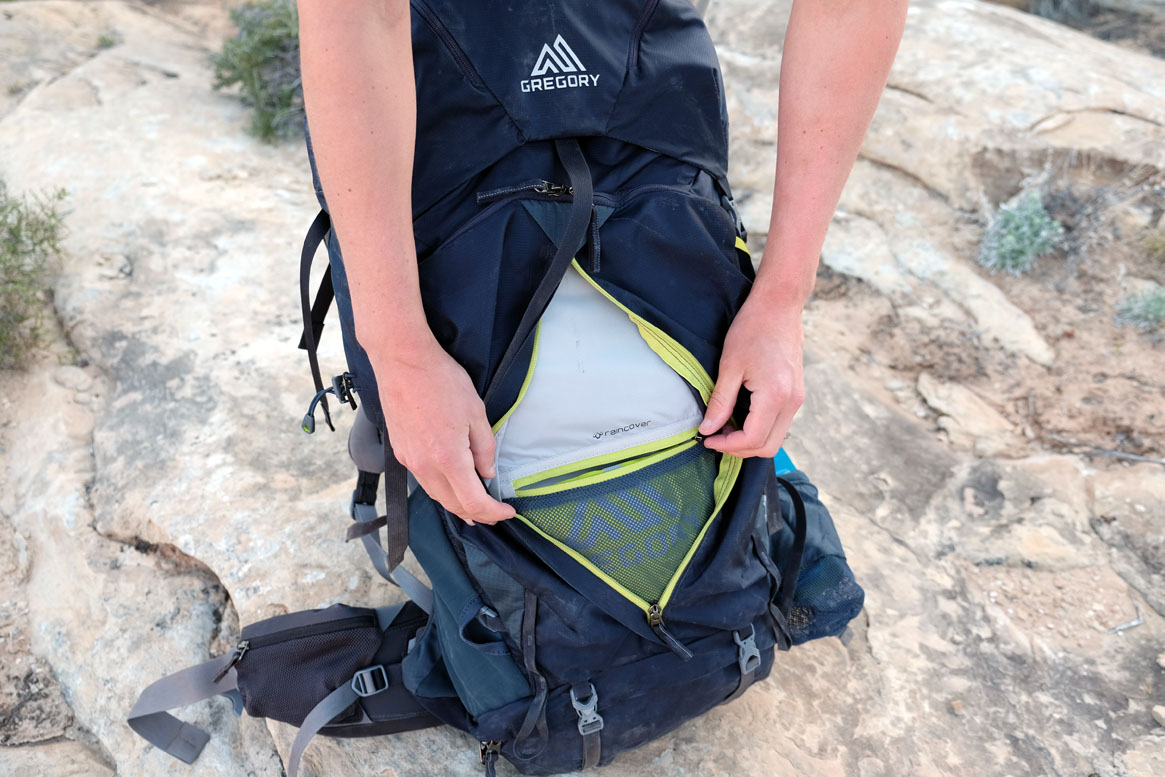
| Pack | Price | Weight | Fabric | Pockets | Access | Capacities |
|---|---|---|---|---|---|---|
| Gregory Baltoro 65 | $299 | 5 lb. 1 oz. | Nylon (210D & 630D) | 8 exterior | Top, front | 65, 75, 85L |
| Osprey Atmos 65 AG | $260 | 4 lb. 9 oz. | Nylon (100D x 630D) | 8 exterior | Top | 50, 65L |
| REI Traverse 70 | $239 | 4 lb. 13 oz. | Nylon (210D & 630D) | 9 exterior | Top, front | 48, 70, 85L |
| Osprey Aether 70 AG | $310 | 5 lb. 3 oz. | Nylon (210D & 500D) | 7 exterior | Top, front | 60, 70, 85L |
| Deuter ACT Lite 65+10 | $209 | 3 lb. 15 oz. | Nylon (210D) | 6 exterior | Top | 40, 50, 65L |
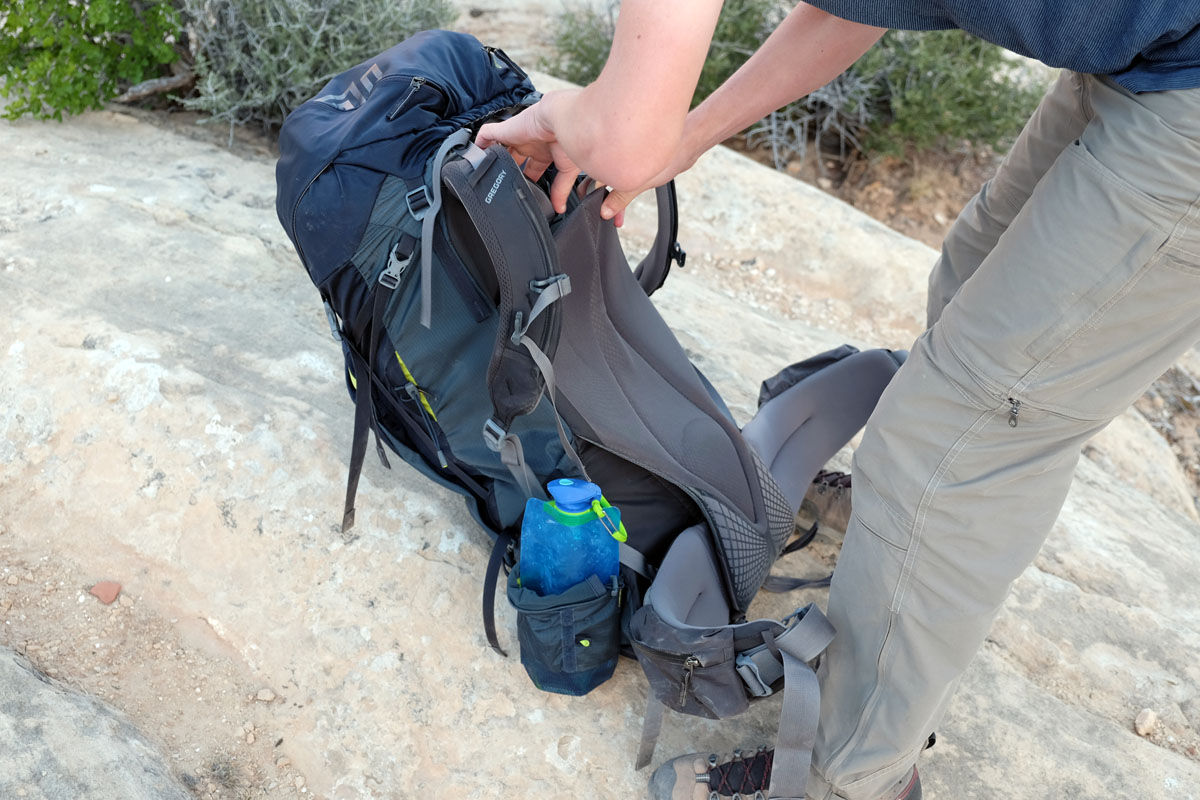
A direct competitor to the Baltoro is the new Osprey Atmos AG (see our in-depth review), which comes in about $40 cheaper. The Baltoro can't stack up to the Atmos in terms of back breathability, but very few packs on the market can. Where it does beat the Atmos is hauling ability: the Baltoro’s firm but supportive padding is a major boon while carrying a heavy load, something we loved while hauling in extra liters of water to campsites that were far from a water source. We found the Atmos' dependence on mesh paneling along the hipbelt is little less comfortable as the miles add up—particularly when you’re hauling in excess of 40 pounds.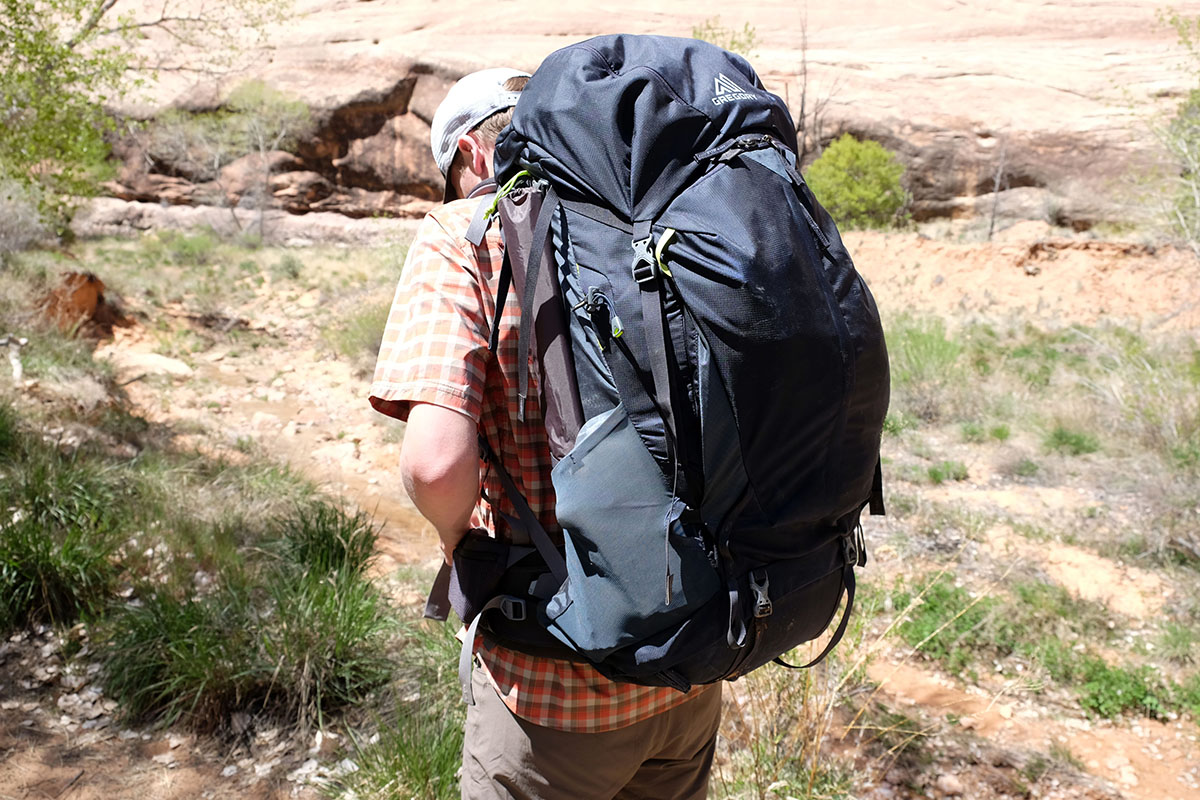
There are a number of other well-established players in the pack market, including the Osprey Aether AG 70 and REI Traverse 70. The Aether AG has a better built-in daypack (for more information see our in-depth review) and the Traverse is more affordable, but the Baltoro's padding, durability, pocket organization, and build quality stand out.
Overall, we think the Baltoro is a quality design, moving their flagship pack into a very competitive weight while keeping the product true to its origins. Impressively, they also dropped the price in the process—a nearly unheard of thing nowadays. At just under $300, it's a pretty good deal for the heavy hauling abilities, enough so that we rank it near the top in our annual round up of the best backpacking packs.
If you’re thinking about buying gear that we’ve reviewed on Switchback Travel, you can help support us in the process. Just click on any of the seller links above, and if you make a purchase, we receive a small percentage of the transaction. The cost of the product is the same to you but this helps us continue to test and write about outdoor gear. Thanks and we appreciate your support!
Depending on the seller, most products ship free in the United States on orders of $50 or more. International shipping availability and rates vary by seller. The pricing information on this page is updated hourly but we are not responsible for inaccuracies.